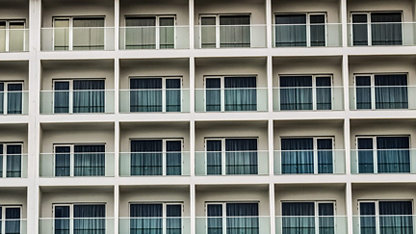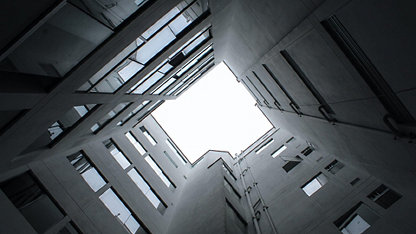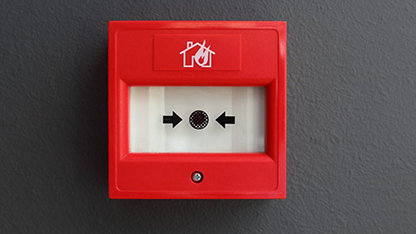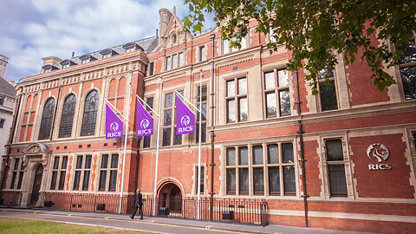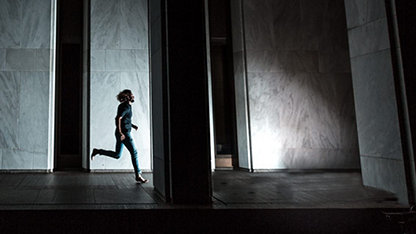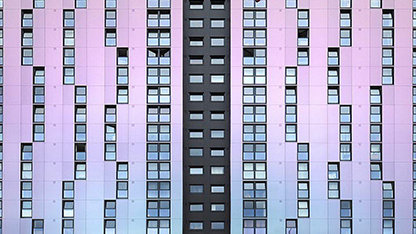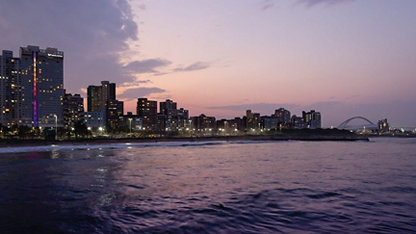The catastrophic fire that swept through Grenfell Tower in June 2017 took the whole world by surprise.
But three years before, an eerily similar set of events had unravelled in Melbourne, after a fire broke out in the early hours of the morning on 25 November 2014 in a high-rise tower block, where 400 residents lived. Like Grenfell, the incident report concluded that the fire had spread with a speed and intensity caused by the building's aluminium-clad walls; a material, it said, that was typically used in low-to-medium-rise commercial properties.
Fast-forward to August 2017, and another large fire ripped through a residential block, this time in Dubai. This was the second blaze to hit the Torch Tower in two years, with the building's external cladding, again, to blame.
The similarities of these three cases lay in stark contrast to the tough restrictions that exist in the US over the use of the cladding material, or to the outright ban that is in place in Germany. Debate has been sparked as to why these differences exist at all.
Questions are now being raised about whether it's time to establish a global set of fire safety standards for built environment professionals and what a standardisation of this scale would look like in practice.
Leading the charge for standardisation is Gary Strong FRICS, who is chair of the International Fire Safety Standards (IFSS) Coalition that was launched at the UN last July. The task of the coalition is to establish a common set of internationally accepted principles for fire safety aspects of design, engineering and construction, occupation and ongoing asset management.
"After reaching out to other countries, it quickly became clear that there were huge differences in the fire safety codes that existed and that, in some circumstances, some countries didn't have any at all," says Strong, who is also Global Building Standards Director at RICS. "For example, in the UK we have green fire exit signs and in the US they are red. I've been in the States and someone has said to me 'that's red, does it mean we can't go through it?'. So, [these differences] lead to massive confusion."
These inconsistencies also make it difficult for built environment professionals working in different countries to comply with individual codes that exist, adds Strong.
His concerns are echoed by other built environment professionals such as Nick Constantine MRICS, head of building consultancy at Asteco Property Management in Dubai. He explains that, before 2011, Dubai "didn't really have a set of codes to follow that were UAE-specific, so it was down to consultants and engineers to specify codes".
In 2011, the country introduced its first fire life-and-safety code, which was then updated in 2013 to ban the use of flammable cladding on buildings that are more than 50m in height, he says. This update followed a serious fire that destroyed Tamweel Tower at the Jumeirah Lakes Towers development, which was covered in the material.
After the Torch Tower fire in August 2017, the code was revised in 2018 to further improve upon the issues relating to cladding, says Constantine. It also addressed the roles and responsibilities of all those involved in the building of an asset, right the way through the supply chain from the owners to the manufacturers. "Dubai has generally been quite quick to respond when needed to address issues in the codes," he says, although he adds that a common set of practices would still be helpful for industry professionals.
Performance review
The IFSS Coalition's initial focus will be on life safety. The intention is that future principles may also deal with the protection of societally important buildings, the destruction of which would have a significant impact on a nation – as the recent fire at Notre Dame in Paris demonstrated. The coalition proposes to develop these standards on a set of performance-based criteria rather than prescriptive measures – a point that many in the industry are getting behind.
“If they knew a country had signed up to a global standard, it would give them a bit more confidence in investing there. ”
Nick Constantine MRICS
Asteco Property Management
What this means in practice is wide ranging, but Mark O'Connor, Director and Head of Specialists in WSP's property and buildings business in London, gives an example of the difference: "[A prescriptive approach to fire safety resistance in a building's structure might say] if your building has this occupancy and is of a certain height, it must have 120 minutes' fire resistance. There's no deviation from that. If you follow it, you will meet the structural requirements of the building regulations."
For performance-based criteria, on the other hand, an engineer would take into account several factors in relation to the specific building, such as type of occupancy, compartmentalisation and ventilation, to assess how hot the building would get in the event of a particular fire, after which they would design a structure that could withstand that fire.
"So you're treating a building on its merits and not just prescriptively applying the same rules to every building," adds O'Connor. "[Instead] you apply the most fire-resistant elements to the bits of the structure that need it most, to maximise design efficiency." As an extension to this latter point, there was a consensus among experts that a performance-based approach would allow for greater innovation in the design, construction and engineering of buildings.
Furthermore, it is thought that a set of global standards – which by their nature would be new and updated – could provide greater flexibility in asset classes that are evolving, such as the private-rented sector and coworking. Balfour Beatty's David McCullogh FRICS, chair of the RICS Fire Safety in Tall Buildings working group, notes: "Some of our current fire standards have been based on things that have happened across history and some of it doesn't have a lot of research behind it – it's just common practice. So one of the biggest areas where [outdated standards] become a problem is if you have new developments, and new ways of using buildings and occupying them."
How inequality fans the flames
There were close to 121,000 fatalities from fires in 2017 globally. Death rates are falling but the difference between developed and emerging nations is still stark. Across sub-Saharan Africa, fires account for 5.76 deaths per 100,000 individuals, compared with 0.68 in Western Europe.
Self-preservation
A good example of this can be taken from Hong Kong's self-storage sector, says Simon Tyrrell MRICS, managing director of E3 Capital Partners, which invests in alternative asset classes. He explains how a devastating fire in a self-storage property in June 2016, which caused the deaths of two firemen, brought to the fore the inconsistencies that existed in fire safety standards – particularly in sectors that are relatively new. "A lot of industrial buildings were built in Hong Kong during the 1970s and 80s, which at the time was a manufacturing hub," Tyrrell explains. "So, when that industry moved away, to areas such as Shenzhen, Hong Kong was left with relatively old and obsolete property."
How inequality fans the flames
There were close to 121,000 fatalities from fires in 2017 globally. Death rates are falling but the difference between developed and emerging nations is still stark. Across sub-Saharan Africa, fires account for 5.76 deaths per 100,000 individuals, compared with 0.68 in Western Europe.
As a result, occupiers of these buildings, such as self-storage companies, had built out their sites relevant to the fire safety codes, but they weren't necessarily updated to best practice. "As long as you built your space and it complied with the code of the building at that time, it was never checked, because it was compliant," says Tyrrell. "No one said: 'This is a slightly different use so it should have its own specific asset class.' You were just zoned as an industrial user."
After the fire, the Hong Kong government questioned whether self-storage should have its own asset class and specification, and subsequently developed a set of rules and regulations, which Tyrrell says were very difficult to control. "We had building services saying we had to do 'x, y, z' and fire services saying we had to do 'a, b, c', but if you did one you couldn't comply with the other because they weren't talking to each other."
Eventually the sector worked with the government to come to an agreement. However, Tyrrell believes that a global best practice "would really add weight" to the work that has already been done in relation to his sector in Hong Kong, as well as other parts of Asia and Southeast Asia where the self-storage sector is growing.
In terms of reducing business risk, Tyrrell flags the boost to investor confidence in newer sectors such as self-storage that global standards will bring. "Irrespective of what local regulations say, you could take the moral high ground in what should be done relative to what is done in other markets where a sector is perhaps more mature."
Constantine concurs: "Generally, I think investors would be pleased with [a global set of standards]. If they knew a country had signed up to a global standard, it would give them a bit more confidence in investing there. They would know that their asset is going to be protected and that there's not going to be that risk involved of having to do an intensive technical due diligence to ensure that a certain standard that they want has been implemented."

The fire at Grenfell Tower in June 2017 cost 72 lives.
Knowledge gap
Plus, an overarching global standard could prove useful to the sharing of skills and knowledge between countries, Constantine adds. "Quite frequently, as surveyors, we find that after the building has already been constructed, tradesman or maintenance have come [post-construction] and affected the compartmentalisation, or the owners or occupiers have covered up the fire detectors due to things like cooking, so I would welcome a clear definition and education that would also help [for the operation of the asset]."
Constantine admits that such a task would be difficult to implement – a point echoed by O'Connor, who explains the complexity of building regulations and rules in relation to Grenfell. "It's not just about fire. [Grenfell] had to meet lots of other regulation requirements, so it's a many-faceted thing. We can't just take fire safety in isolation. [For example], sustainability and environmental factors have led to an increase in requirements for the thermal performance of a building, which is what drove the use of [the Grenfell] material in the first place. Nothing can be taken in isolation, so to come up with a common standard that also works with countries and other regulations and requirements will be difficult to achieve."
On this last point, Strong does not underestimate the scale of the challenge, with the IFSS Coalition at "the beginning of a very interesting discussion".
McCullogh adds to this, noting how incidences of fire around the world can drive changes to building regulations and codes in an area, rather than them being discussed as a common issue. "This is why RICS is saying that we should be learning from each other, and that if something should be done, it should be argued logically, no matter where in the world you are."
As for what's next, Strong says the coalition is working on the first set of high-level principles (see panel), which it hopes to publish later this year. The group also intends to set up a document-sharing platform for built environment professionals to access and reference whenever they need, says Strong. After that, the coalition will focus on the more "granular detail" around fire safety standards, covering issues such as cladding or evolving asset classes.
Navigating around the many political and environmental challenges will be no easy task for the coalition, particularly following the highly emotive events of tragedies such as Grenfell. But one thing's for sure: as rapid urbanisation and globalisation increase the likelihood of people needing to live in high-rise buildings, the importance of not only having flexible fire-safety standards, but ones that can be shared easily across countries, will certainly come to the fore.
- Robyn Wilson is an award-winning journalist and the former news editor of Construction News
This article originally appeared in the Safe issue of Modus (June 2019), originally titled "Burning issue".


